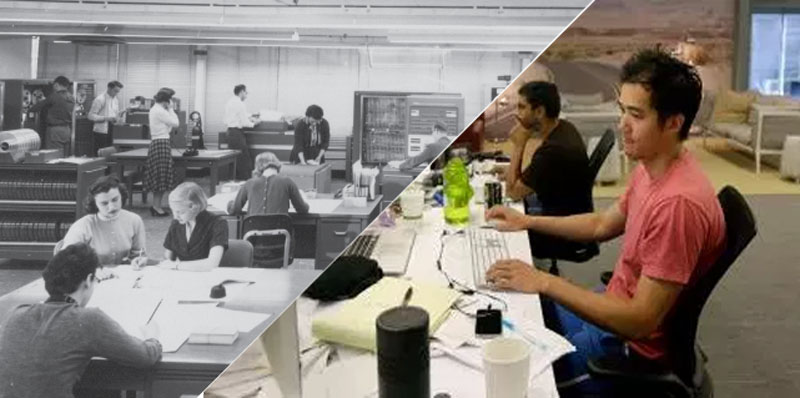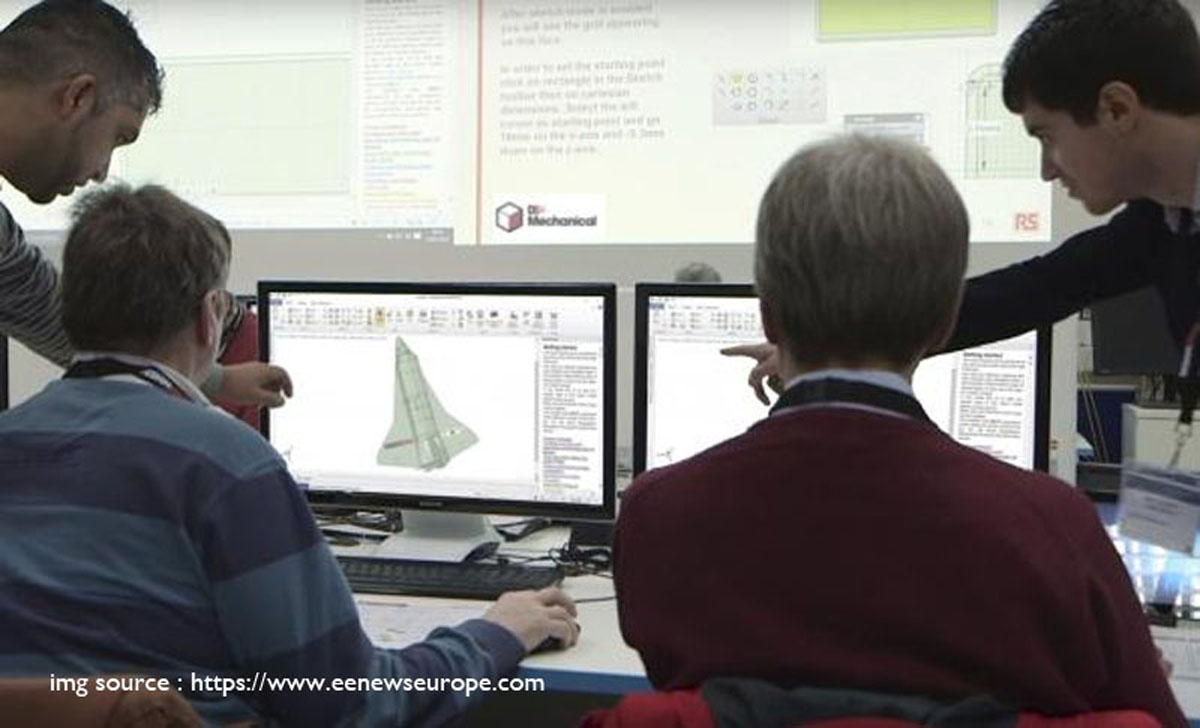It has happened time-after-time. As technology and lifestyle change, the concept of the office to torn apart and rebuilt as a new vision, a new way of getting more work done with less effort. Modern technology is the driving force. It is the catalyst which has driven changes over the last few decades, and the speed of change is not slowing down. The next round of big changes in offices is just around the corner. We have already seen the birth of robotic security guards and meeting rooms which are scheduled and controlled by apps, but that is just the start. Changes are coming fast.
 How are our offices and workplaces going to look in the future? We talked to 6 office design experts to find out what changes they expect to see over the next ten years. Here is what they had to say.
How are our offices and workplaces going to look in the future? We talked to 6 office design experts to find out what changes they expect to see over the next ten years. Here is what they had to say.
The Architect
Question: “What will the office look like in 10 years’ time?”
Lord Norman Foster is 82 years old and has seen massive changes during his life. This world-renowned architect designed some of the planet’s most dramatic structures including:
- City Hall & Bloomberg Headquarters in London
- The Reichstag Dome
- Apple Campus 2 – California
Question: “What will the office look like in 10 years?”
Norman Foster: Young people will drive the changes. They will want greener offices, in every sense of the word. The office will need to both support the lifestyle they want, plus provide greater levels of sustainability. The new generation of office workers will demand their employers focus on tackling tough issues like climate change. I think the office will shift to provide a higher-quality work area while improving sustainability – something which can be determined by a chartered surveyor, such as Curchod and co. This is good for employees, businesses, and the environment.
Question: “What will we see increase in our offices – and what will decrease?
Norman Foster: Nature will increase in office. Sustainability will be at the core. You will see less involvement from real estate developers. Entrepreneurs are driving these changes forward quickly. The big change comes from the involvement of entrepreneurs taking over the role of developers. They push for innovation, where developers follow market trends.
As an example, the innovative Apple Park was started by Steve Jobs, carried forward by Chief Design Officer Jony Ive and his team, and embraced by CEO Tim Cook. They took on the task as an entrepreneurial challenge.
Question: “What do you think will be the single biggest driver of change in offices over the next 10 years?”
Norman Foster: It will be the merging of technology and a strong social agenda. It will be challenged by our natural human tendency to resist change.
The Workspace Innovator
Tanya Wood directs Soho Works, the workplace subsidiary of Soho House, who is innovative in hospitality and member’s clubs. She is in charge of London’s Shoreditch, where they offer coworking offices. She is overseeing plans for possible expansions, too.
Question: “What do you expect the office to look like in 10 years’ time?”
Tanya Wood: Comfort will be the cornerstone. The office will become a place you enjoy spending extra time. It will have less pressure and be more casual. Employees are demanding flexible schedules and looking for ways to escape traditional office settings now. They are looking for spaces the make work more enjoyable. They are looking for offices with space to socialize, workout, take a quick nap, and provide the specialized equipment and resources needed for our changing world.
Question: “What do you think will drive the changes in the workplace during the next 10 years?”
Tanya Wood: Without a doubt, socioeconomics. International travel is becoming commonplace. Improved gender equality. Shared childcare will become common in the workplace. New technology is driving changes in society. There is a demand for more choices, increased autonomy, more independence. The office that meets those needs will be in high demand.
Question: “How do you expect this to affect the building environments?”
Tanya Wood: Building owners and office landlords need to make changes quickly. Traditional office spaces are being pressured to provide more resources, comfort, and socialization.
Question: “Will this have an effect on our home, too?”
Tanya Wood: I expect to see the workplace and home become more integrated. The office will need to add more to your life than just a place to work. This allows your home to become a true sanctuary, not just an escape from the office.









